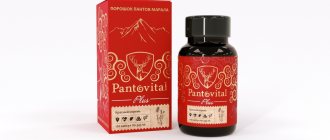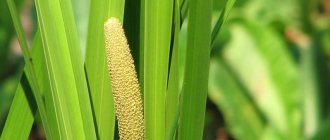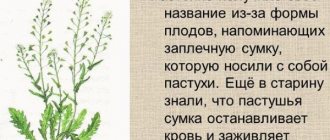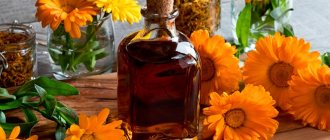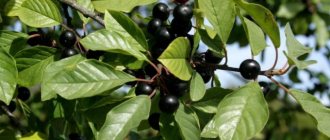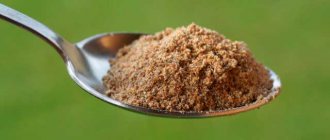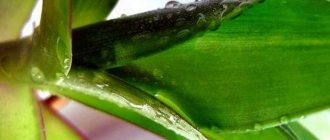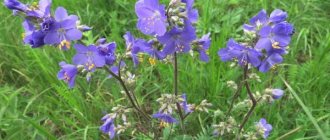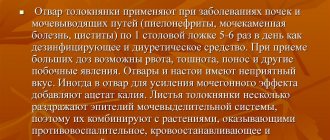Elecampane, whose second name is Yellow, is a large number of perennial plants (about 200 species) from the Asteraceae family, which grow in Asia, Europe and Africa.
Only Elecampane is included in the register of medicinal raw materials, whose healing capabilities are the subject of entire legends. The name of the plant consists of the phrase “nine powers” - folk herbalists believe that it can help with any disease.
In 1804, inulin was discovered in the roots of the plant, which is a safe alternative to sugar and starch for patients with diabetes. Inulin is otherwise called invert sugar: under conditions of acid hydration, it turns into a glucose isomer.
Today, the medicinal properties and contraindications of elecampane have been fully studied; the plant is used in both official and folk medicine.
Description of the plant
Elecampane (Inula) is a grass that prefers habitat in areas of wet meadows and lake shores. You can also meet it on the edges of deciduous forests.
The plant cannot be called short, because it can reach a height of 180 cm. It is for this reason that it is difficult not to notice among other grass.
What does elecampane look like? It has large leaves on a thick, erect stem. Its entire surface is covered with thick whitish fluff. The leaf blades of the plant have unequally jagged edges. At the roots they are transformed into petiole parts of elliptical shoots.
Elecampane basket-tassels are edged with leaves in the form of wrappers. The bright yellow flowers of the grass can be divided into two types. At the edges they have the shape of a tongue, and the middle tubular ones are equipped with five teeth.
The rhizome of elecampane with shoots has a thick and fleshy structure. Its upper part is covered with a brown film. The inside of the rhizome is yellowish in color.
Elecampane blooms in mid-summer. At the beginning of autumn, its fruit ripens in the form of an achene with a diameter of 5 mm. Its main distinguishing feature is the presence of a long crest.
One of the species of this genus is the most popular - elecampane: this is the most popular species, which has medicinal properties
Helen's cleansing
A beautiful Greek legend is associated with the elecampane plant. Even the goddesses were jealous of the beauty of the daughter of Zeus and Leda. Many rulers dreamed of taking Elena as their wife. The cunning Odysseus, in order to avoid discord and quarrels, advised them: “Let the beauty decide for herself with whom she wants to connect her life. And let the suitors take an oath that they will not take up arms against her chosen one.”
Menelaus, who later became the king of Sparta, became Helen's chosen one. And no one could have imagined how much trouble their union would bring. After all, for ten years the blood of the Achaeans and Trojans was shed because of Helen.
Paris, the son of the Trojan king, kidnapped Helen, and the angry Menelaus gathered an army and marched against Troy. The Greeks kept the Trojans under siege for ten years. And then the duel between Menelaus and Paris took place.
Beautiful Elena dressed in expensive clothes and climbed the tower to watch the duel. Climbing the fortress walls, she remembered her native Sparta, and hot tears flowed from her eyes. Where they fell to the ground, plants with beautiful flowers appeared, which were given the name “Elna Elenium” - the purification of Helen.
Habitat
The territory in which the elecampane feels comfortable is quite extensive. It grows in Eurasia and Africa. With such a wide range, it is possible to meet elecampane in the Chinese and Mongolian expanses.
They are very familiar with it in Western Siberia, Altai and the Middle East. It also pleases the inhabitants of the Caucasus with its sunny petals. Elecampane looks especially impressive against the backdrop of mountain streams.
Regions of distribution on the map of Russia
Chemical composition
The general composition of the plant in accordance with the actual content to the daily norm (/) for humans:
- calcium - 4.5 mg/1 g;
- magnesium - 1 mg/0.4 g;
- sodium - 0.9 mg/1.3 g;
- sulfur - 1 mg/1 g;
- chlorine - 1.4 mg/2.3 g;
- iron - 0.001 mg/18 mg;
- manganese - 0.0016 mg/2 mg;
- copper - 0.6 μg/1000 μg;
- fluoride - 100 mcg/4000 mcg.
The main components of the ground part of the elecampane:
- Plant polyphenols (flavonoids). They are necessary to stabilize the nervous system and strengthen the walls of blood capillaries.
- Essential oils. When creating the aroma of a plant, they perform an additional function in the form of attracting the attention of pollinating insects.
- Tannins. Their main feature is the ability to reduce the secretory activity of the gastrointestinal tract.
- Organic acids. Fumaric acid promotes carbohydrate metabolism, acetic acid promotes the metabolic process, propionic acid promotes glyconeogenesis in the liver.
- Complex organic compounds. Ascorbic acid (vitamin C) is essential for immune protection, and tocopherol (vitamin E) is essential as an antioxidant.
Elecampane roots contain:
- Inulin. This polysaccharide is considered a natural prebiotic that has a beneficial effect on the condition of the large intestine.
- Alkoloids. We are talking about effective antispasmodics with a wide spectrum of action.
- Saponins. The activity of hormones without their assistance is significantly reduced.
- Slime. For enveloping the walls of the stomach and protecting it, it has no equal.
- Gum. If there is excess cholesterol in the body, you cannot do without this component.
Elecampane's roots
How to prepare?
As a medicine, rhizomes weighing 0.5-1.5 kg are collected for at least 3 years. This is usually done in the fall after the fruits ripen or in early spring. They are dug out of the ground, shaken off, thin branches and remains of the stem are removed, washed, and then cut into finger-thick pieces and laid out in the attic or other suitable room for drying.
Processing in a dryer is allowed, but the temperature should not exceed plus 45 degrees. The product is stored in glass containers for no more than two years.
The herbaceous perennial is a powerful herbal remedy. When used correctly, it will provide great health benefits. The main thing is to take precautions and consult a specialist before starting treatment.
Dosage forms of drugs
Drugs containing elecampane are prescribed for accompanying therapy for:
- oncological diseases;
- metabolic disorders in the body;
- joint problems;
- pinched sciatic nerve;
- low hemoglobin.
List of known drugs:
- "Elecampane P" (Russia). One hundred tablets of a natural remedy are prescribed for colds, bile stagnation and stomach cramps. Elecampane cryopowder is supplemented with vitamin C.
- "Elecampane" (Ukraine). It is produced in the form of filter bags of 4 g each. It consists of rhizomes and roots of elecampane. The drug is prescribed for coughs and colds.
- “Elecampane” with bear bile (Russia). The release form of the drug is a cream-balm in an aluminum tube. It is used to treat joints, relieve swelling and pain in their area.
- “Elecampane-syrup” fortified (Kazakhstan). Each bottle contains 125 ml of cold remedy. It contains roots and rhizomes of elecampane, vitamin C and rose hips.
- Cream-balm “Folk Healer” (Russia). It is used for psoriasis and lichen. After water procedures, the cream is applied to problem areas of the body.
Muscle and cartilage diseases
For radiculitis and inflammatory muscle diseases, muscle and tendon sprains, elecampane is used externally. The roots of the plant should be dried in a frying pan or in the oven, ground into powder, mixed with lard, then slightly warmed up and applied to the sore spot as a compress. Hold until the mixture cools down.
If side effects develop during treatment with elecampane (nausea, diarrhea, dizziness, allergies, etc.), use should be stopped immediately.
This is an excellent home remedy that has a similar effect to warming and irritating ointments.
Essential oils and other beneficial substances penetrate into the source of inflammation, relieve pain, relieve swelling and help alleviate the condition. This compress can be used for respiratory diseases, but only during the period of remission - at normal body temperature and the absence of acute symptoms.
Application
The tall, bright plant has a wide range of uses. What it looks like in practice is worth considering.
In gynecology
For women's problems, only the attending physician can prescribe elecampane. Preparations based on it are recommended in the following cases:
- problems with conception;
- uterine prolapse;
- painful menstruation;
- disruptions in the female cycle.
If you need to reduce lactation, then women should use the tincture to wean the baby from the breast.
Elecampane for men
In a family where there are no children, the woman is not always to blame. For men with problems with reproduction, a remedy made from elecampane has been developed. The infusion is prepared at the rate of 3 tbsp. l. dried roots per 0.5 liters of boiling water. The exposure time of the product is 20 minutes.
You need to take elecampane for men every two hours, 1 tbsp. l. within a couple of weeks. Then you should take a break for 15 days. After it, you need to take the infusion of elecampane according to the same scheme.
In cosmetology
The herb can be used for young and mature skin. It is also suitable for caring for the entire body.
Finished products:
- Face cream. In the “Magic Alatai” series from “Health Compass” (Novosibirsk), the product without silicones contains elecampane, vitamins E and C, as well as 11 oils. The bottle is equipped with a pump dispenser.
- Hair lotions. As a finished product, it is worth taking a closer look at the restorative infusion from “Secrets of Grandma Agafya” (Russia). Product description: alcohol-free lotion based on elecampane, black alder cones, lungwort and milk thistle. Returns shine to weakened curls with split ends.
- Hair shampoos. The stronger sex will like the “Masculine character” remedy made from elecampane, horsetail and nettle from KLEONA (Russia).
Masculine shampoo from kleona from elecampane
Contraindications
You should not drink a drink from the root in case of individual intolerance.
The following drugs are also prohibited:
- for chronic vascular diseases;
- gastritis;
- hypotension;
- heart problems;
- pregnancy;
- nursing mothers;
- chronic constipation.
It is contraindicated to use the decoction for children under three years of age; it is allowed for children aged 3-12 only with a doctor’s indication. The drug can have unpredictable effects on the child’s body. To avoid consequences, it is better to exclude it during pregnancy and breastfeeding.
Uncontrolled use of the drug without medical supervision can worsen your health.
For kidney diseases, the drug is also dispensed after consulting a doctor. Elecampane has a diuretic effect, which will create a strong load on the kidneys, they may not be able to withstand it.
In case of heavy menstruation in women, it is also better to discontinue the drug. It increases the amount of discharge, which can negatively affect women's health.
The first signs of elecampane poisoning can manifest themselves in the form of nausea and lethargy, possibly excessive salivation, loss of coordination, even coma.
In folk medicine
Official medicine does not take herbal medicine seriously. She sees the medicinal effect of it only in accompanying therapy.
However, this conclusion is logical when it comes to serious illnesses. Otherwise, elecampane occupies an important place in folk medicine, and its beneficial properties are highly valued.
Recipes for using elecampane for medicinal purposes
In folk medicine, the plant is used for the following purposes:
- Strengthening the immune system. Tincture of elecampane to restore internal energy involves grinding the fresh roots of the plant. They are mixed with a couple of spoons of honey and boiled for 10 minutes over low heat in 700 ml of Cahors. You need to take the drug ¼ cup 2 times a day.
- Treatment of bronchial asthma. Using a juicer, an extract is obtained from the roots of elecampane. The juice is mixed in equal proportions with any honey. Half an hour before each meal, drink 1 tsp. folk medicine. It also treats coughs and sore throats.
- Therapy for tuberculosis. This vodka tincture is contraindicated for children. A couple of glasses of roots are rubbed and 0.5 liters of vodka are poured. A high percentage of alcohol content in it is welcome. The course of therapy for severe illness is long: from two to three months. You need to drink 1 tbsp three times a day. l. strong medicine.
- Cycle stabilization. To induce menstruation, chop a couple of plant roots and pour two glasses of boiling water over them for an hour. Infusion for women take ¼ cup twice a day. A decoction in the same proportions will help to induce menstruation with a large cycle disruption. Instead of infusing it, you need to simmer it over low heat for 15 minutes.
- Raising hemoglobin. In case of anemia, the rhizome of elecampane is crushed. 1 tbsp. l. Pour the powder into a glass of boiling water and leave for 10-12 hours. The drug is drunk three times a day, ¼ cup, regardless of the meal schedule.
- Treatment of joints. Elecampane root should be ground into powder. 5 tbsp. l. pork fat is mixed with it and simmered over low heat for 5 minutes. Using gauze and adhesive tape, apply a patch to the problem area. It is changed as the ointment dries.
- Increased appetite. Elecampane exhibits medicinal qualities not only in accompanying therapy for diseases. To gain weight in case of poor appetite, use a decoction of elecampane. 100 g of yeast, 0.5 liters of honey, elecampane roots are placed in a 3-liter container and filled with water to the base of the neck. There is no need to steam the contents of the jar initially. It is enough to place the container in a warm place for a couple of weeks. It is recommended to place a rubber glove on top of the jar for better fermentation. After the announced term, elecampane is drunk three times a day, ½ glass.
How to take for cough
A cold is often accompanied not only by a runny nose, but also by a debilitating dry or wet cough. The elecampane plant helps alleviate the general condition of a person with bronchopulmonary pathologies.
Depending on the type of disease, the following is used:
- Infusion. It is useful for irritation of the upper respiratory tract. There are no special restrictions on its use. The infusion is drunk often, 2 tbsp. l. with every coughing attack.
- Decoction. Bronchitis and tuberculosis are the main diseases for which thermally processed elecampane raw materials will help. The decoction promotes the rapid removal of sputum during a debilitating cough.
- Tincture. It cannot be used when treating children on their own initiative. With the permission of the pediatrician, after 3 years the child is given 1 tbsp. l. spoons of tincture an hour before meals. However, it is better to replace it with honey with elecampane.
- Herbal collection. Tea drink No. 10 from ZAO Fito-PaM (Altai) has proven itself to be excellent. It contains elecampane root in its pure form. You can make it at home. How to brew elecampane? The main thing is that the raw materials are collected correctly. Otherwise, with any deviation in proportions, the grass will become a useless product.
Tea drink No. 10
Diseases of the reproductive system
Elecampane contains essential oils and other components that have analgesic and antispasmodic properties. Due to this, it is used by women for the following gynecological diseases:
- menstrual irregularities;
- painful or irregular periods;
- uterine prolapse;
- endometriosis.
It is prepared from a tablespoon of raw materials and a glass of boiling water, after which it is placed in a water bath - as indicated above. It can be taken if menstruation is delayed, but only in cases where it is not caused by pregnancy or tumor processes.
Contraindications to the use of elecampane include pregnancy, heart and vascular diseases, kidney disease, and gastritis with low acidity.
If you answer the question of what diseases elecampane helps with, you cannot ignore infertility. The medicinal substances contained in the root of the plant increase sperm motility and promote their attachment to the walls of the uterus. Accordingly, the decoction is useful not only for women, but also for men, but after conception the expectant mother should stop taking it.
Is it possible to buy ready-made raw materials?
The use of the product is not limited to the method of its extraction. You can easily buy it at your nearest pharmacy. In most cases, you can buy elecampane roots there in bulk or in filter bags.
Instructions for using finished raw materials from different suppliers are not much different from each other. According to the standard, two of its bags are filled with 250 ml of boiling water. An hour before meals, drink half a glass.
You can replace the decoction from the filter bags with syrup. This will save time and help cure your child’s cough.
Dry raw materials can be purchased in the form of filter bags and in bulk in packs
To some people, syrup seems like child's play that can be used at your own discretion. However, an overdose of it is still recorded, since elecampane root cannot be taken uncontrollably in official and folk medicine.
Ancient healers
Healing elecampane was known to ancient healers: Pliny, Hippocrates, Dioscorides. Its expectorant properties were especially noted. Dioscorides also knew how to brew elecampane for coughs, and he prescribed crushed elecampane root with honey to his patients 2 times a day. In Ancient Rome it was used as a seasoning for various dishes.
In later times, elecampane wine was popular. Fresh rhizome juice was mixed with honey and red wine, boiled for 10 minutes and taken to increase stomach acidity. Poetic lines about elecampane were left by Odo of Mena, which describe the indicated properties of elecampane.
Features of raw material procurement
The medicinal properties of the plant do not lose their potency when properly harvested. The above-ground part of the roots is cut off, the rest is cleared of soil and chopped into pieces. The processed elecampane is dried at a temperature of 35 °C.
It is better to place the crushed plant in a special dryer so that its use does not take long.
Elecampane has medicinal properties and contraindications in different proportions. In the overwhelming majority, the plant and its correct use are only beneficial to the human body.
X
Medicinal properties of elecampane
Elecampane has nine truly fantastic properties: it heals wounds on the body, helps a person breathe freely, walk, hear, see, speak, think, love, and digest food. This is where the name of the plant comes from: nine forces - elecampane.
The main effects of drugs from the rhizomes of the plant:
- anti-inflammatory;
- choleretic;
- expectorant.
Moreover, these drugs have a positive effect on appetite, digestion, the functioning of the stomach and pancreas, and metabolism.
With the right approach to treatment, elecampane relieves gastritis and ulcers. The plant is recommended for people suffering from diarrhea, bloating, and skin ailments.
We also invite you to find out what healing properties medicinal hyssop has, which also does not hurt to have in your home medicine cabinet.
